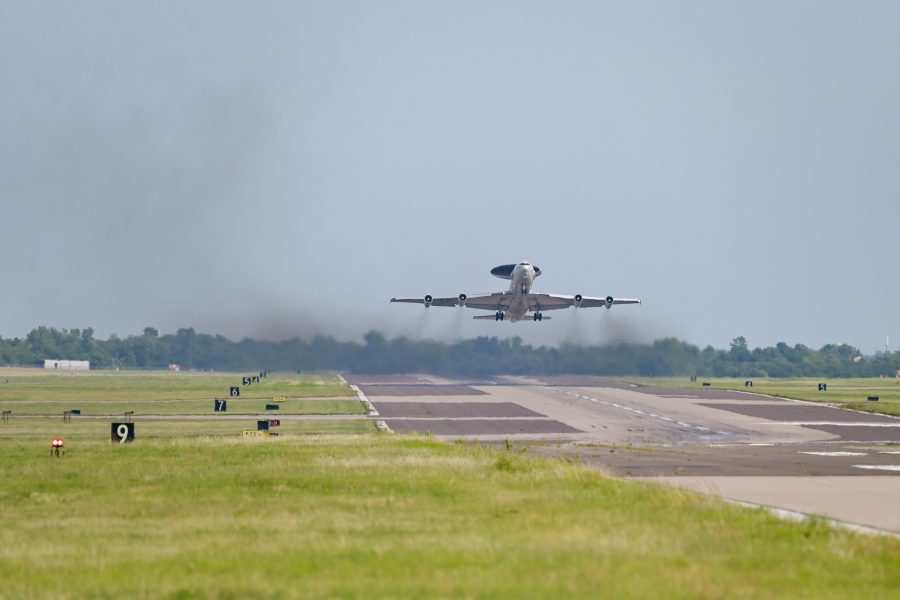The Air Force’s E-3 Sentry AWACS fleet is down to just 18 aircraft with the retirement of the last of 13 aircraft to be divested from Tinker Air Force Base, Okla., this year.
The jet left Tinker for the “Boneyard” at Davis-Monthan Air Force Base, Ariz. on Sept. 21. Of the 13 jets, a dozen AWACS aircraft went to Davis-Monthan over the past six months; the remaining one will remain as a static display at Tinker.
That leaves fewer than 15 AWACS still active at Tinker, long been the Air Force’s main hub for E-3s. The other remaining airframes are assigned to Joint Base Elmendorf-Richardson, Alaska, and Kadena Air Base, Japan.
“By retiring the E-3, the 552nd Air Control Wing can focus on prioritizing the health of the remaining fleet,” the wing said in a release. “Divesting part of the fleet will improve sustainability by adding high demand, low availability parts back into the supply chain, providing a temporary improvement for aircraft availability.”
The E-3’s mission capable rates plunged below 65 percent in recent years, largely because they’re based on a 707 airframe that first flew in 1957 and has long become commercially obsolete. The Air Force’s AWACS fleet averages more than 40 years old.
Air Combat Command boss Gen. Mark D. Kelly called the E-3s “unsustainable without a Herculean effort” last year, praising “miracle worker” maintainers for getting the aircraft to fly at all.
The Air Force plans to replace the E-3s with new E-7 Wedgetail aircraft, based on the Boeing 737.
In a Facebook post, Tinker officials noted that the maintainers with the 552nd ACW are working to “ensure the remaining fleet of AWACS are operationally ready to provide air battle management capabilities anywhere around the globe.”
The Air Force first announced plans to retire 15 E-3s from Tinker in April 2022, but Congress paused the push with a provision in the 2023 National Defense Authorization Act approving only 13 retirements, which were contingent on USAF demonstrating progress acquiring its replacement.
The Air Force formally awarded a contract to Boeing for the E-7 Wedgetail in late February, clearing the way for the AWACS retirements to begin. Looking ahead to 2024, the Air Force plans to divest two more AWACS to reach its original goal of 15 aircraft divestments.
“The E-3 is a legacy airframe which can’t compete in a peer or near-peer conflict and cannot be modified to be part of the next generation of Command and Control (C2)/Airborne Moving Target Indicator (AMTI) systems,” Pentagon budget documents state.
The departures from Tinker are bittersweet for Airmen who spent years working in and on the venerable aircraft. The 552nd Air Control Wing noted in a release that Martha “Fran” Stephens, one of the first women to work on the AWACS, got to tour tail number 83-0009 before it departed Sept. 21.
“If someone tells you they worked on an AWACS, that probably means they worked like a dog,” said Stephens. “They should be respected for that.”
The E-3 is among a number of aging airframes the Air Force is retiring from active service. Others include KC-10 tankers and E-8 JSTARS battle management and targeting aircraft. Both fleets are set to be retired for good in fiscal 2024.
